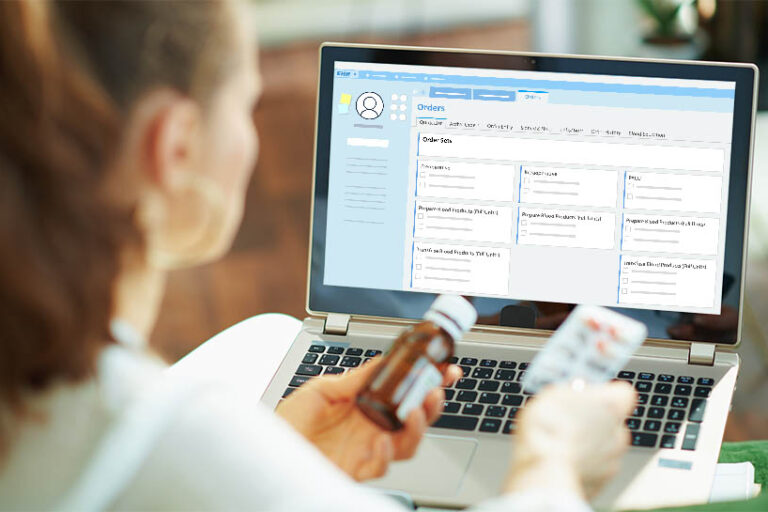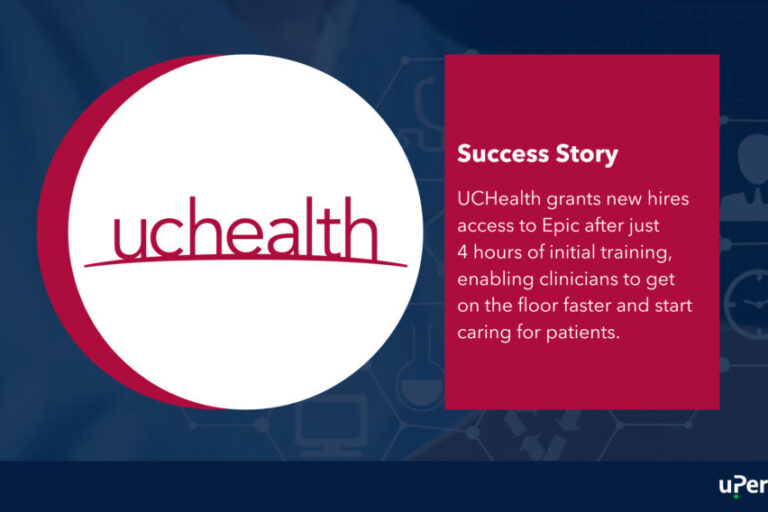Following its recent acquisition by Oracle, Cerner Millennium® continues to gain popularity around the world as a leading electronic health record (EHR). As organizations look to implement Oracle Cerner as their first EHR or a replacement for an existing EHR, they should consider how they plan to train their clinicians.
The importance of Oracle Cerner EHR training
EHRs are integral tools for modern healthcare. However, without adequate training, they can lead to frustration and clinician burnout. EHRs are complex software applications that are highly customizable, which means the user experience can vary greatly based on the health system, department or role. This can make it much more difficult for users to achieve and maintain proficiency. Additionally, EHRs are subject to frequent updates and workflow changes, further adding to the difficulty.
Studies show that quality initial and ongoing training are the most important drivers of EHR satisfaction. In fact, the quality of EHR education has more impact on satisfaction than the EHR itself. It doesn’t matter if your system is using Epic®, Oracle Cerner or another EHR; training is critical to your EHR success.
eCoach: out-of-the-box Oracle Cerner training
Oracle Cerner eCoach is a free learning framework that offers training, coaching and certification resources to health systems. eCoach can be a great way for clinicians to learn the basics of Oracle Cerner. However, because eCoach only offers out-of-the-box content, it shouldn’t be relied on as the only source of training and support. Because EHRs like Oracle Cerner are highly customizable, it’s important to deliver training materials that are specific to your instance of Oracle Cerner and the workflows of your users.
What is just-in-time training?
Traditionally, Oracle Cerner training has been conducted in an instructor-led classroom setting as part of onboarding. However, this model is difficult and costly to scale and doesn’t always meet learners’ needs. Because classroom space is limited, physicians and nurses often end up getting lumped into the same training session. This means their training materials are not workflow-specific and may not be relevant to their roles. Most importantly, classroom training is consistently rated poorly among attending clinicians. One of the best ways to deliver training that is scalable and specific to user workflows is to create custom content and deliver it with a just-in-time training platform.
8 reasons you need a just-in-time training platform for Oracle Cerner
Just-in-time training offers a solution to the challenges associated with traditional training strategies. It excels at delivering training to users as it’s needed. If a nurse is trying to perform a task in Oracle Cerner for the first time, she might open a tip sheet that guides her through the proper steps if she has access to just-in-time training resources. Just-in-time training can drive EHR satisfaction and increase the adoption of new EHR workflows. It can also be an effective way for organizations to scale their training with a self-paced learning format.
 1. Accelerate onboarding
1. Accelerate onboarding
Accelerate Oracle Cerner onboarding with a just-in-time training strategy. With a self-paced learning format, users can start their onboarding training before their first day on the job. Health systems leveraging uPerform’s just-in-time training platform have been able to reduce time spent in initial onboarding by up to 66%!
2. Save time and costs associated with training
Traditional, in-classroom training requires a lot of resources. Between booking classrooms, travel to and from training sessions for both instructors and learners and the time required for stand-and-deliver instruction, the costs add up. Just-in-time training reduces, or even eliminates, the need for instructor-led classroom training, thereby reducing both time and costs associated with training.
3. Scale ongoing training
With less time spent in the classroom, training teams have more time to build out and scale training and support resources. A just-in-time training model allows organizations to scale and deliver a consistent learning experience amid rapid growth, mergers and acquisitions, high turnover and other challenges that put strain on training teams.
4. Turn trainers into coaches
A just-in-time self-paced learning format frees up time for training teams, allowing them to focus on higher-value opportunities. For instance, some uPerform clients are transitioning from traditional trainer roles into coaching roles, in which coaches work one-on-one with users to maximize their efficiency of the EHR.
5. Give time back to clinicians
Clinicians also benefit from time savings with a just-in-time training platform. Not only do they spend less time in training, but it’s also an effective way to reduce documentation time. A recent study published by KLAS Research found that for every hour spent in self-directed eLearning, clinicians saved 91 minutes per week in their documentation. That is compared to just 33 minutes for traditional classroom training.
6. Increase user adoption
Just-in-time training can also increase clinician adoption of new EHR workflows. With how-to content available at their fingertips, users have more confidence to complete new tasks or workflows. After placing support materials in the workflow of users, M Health Fairview increased the use of a new Epic eConsent navigator from just 7% to 87%.
7. Improve EHR satisfaction
Spending less time in the classroom and having access to help materials in their workflow, users rate their EHR satisfaction higher
Reducing the time clinicians spend in training and supporting them with help material in their workflow, just-in-time training drives EHR satisfaction. Users of uPerform at Baylor Scott & White Health rate their EHR satisfaction 12.9 points higher than non-users.
8. Build trust in IT and organizational leadership
Research shows that clinicians who are more satisfied with their training experience also report higher levels of trust in IT and organizational leadership. By supporting clinicians with just-in-time training, organizations can potentially improve overall trust and satisfaction and reduce employee turnover.
Benefits of Just-in-time Oracle Cerner training with uPerform
uPerform is a just-in-time training platform that enables training teams to create and deliver customized learning materials to Oracle Cerner users in their workflow. Its unique ability to integrate with Oracle Cerner and other enterprise software applications provides several benefits to healthcare organizations:
Rapid content creation tool
uPerform allows training teams to rapidly create content in multiple formats (such as videos, tip sheets and interactive simulations), as well as host existing content or content created in other applications.
Customized, role-based support
Workflow-specific training has been proven to be most effective in driving EHR satisfaction and proficiency. uPerform enables training teams to create and deliver training content that is specific to user role and workflow.
Accurate, up-to-date content
uPerform allows training teams to set expiration dates for content and features quick-edit management tools that help ensure content is always up to date.
In-depth reporting & analytics
uPerform provides training teams with a powerful analytics dashboard with insights on content engagement, user engagement and more. Discover where users are struggling and optimize content to better support your Oracle Cerner users.
Support for all Oracle Cerner users
With uPerform, all users in your organization have access to support content using their Oracle Cerner login.
A solution for the whole enterprise
uPerform supports an array of leading enterprise applications, providing health systems with a training solution fit for the whole organization. View our full list of supported apps.
Explore uPerform for Oracle Cerner
Are you looking for a just-in-time training solution for Oracle Cerner Millennium? uPerform is helping health systems get the most out of their EHR by enabling training teams to create and deliver role-specific support content directly in the workflows of their users. Learn more about how leading health systems are driving EHR satisfaction and adoption, improving proficiency and reducing their training costs with uPerform.

 1. Accelerate onboarding
1. Accelerate onboarding








